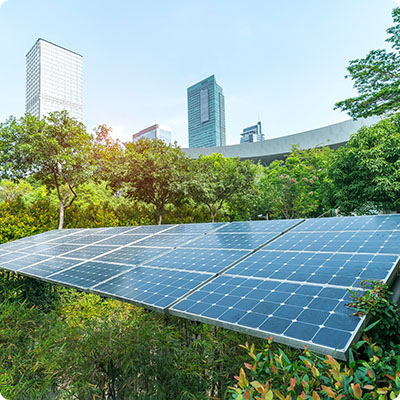The need for soft mobility
Rome gives the impression of being an airy city: the fact that there are almost no skyscrapers contributes to this, just as the periphery is not covered with buildings as in other European capitals, but offers pretty country landscapes. The city also introduced an urban toll in 2001. Only vehicles that pay a subscription can drive in the city centre. The entrance to the area concerned is indicated by signs marked "Zona a Traffico Limitato". The control is carried out by cameras that read the license plates. However, the air quality of the capital remains problematic for the health of the inhabitants, but also for the health of historic buildings. It must be said that it is not always easy to do without a car in Rome. Public transport is not very efficient: buses, trams and metros are obsolete, not very punctual and not enough. There are 240 kilometres of cycle paths, half of which are in parks. That's too little for a city of this size. Between the cobblestones, traffic and the hills of the city of seven hills, cycling is not necessarily recommended. Rome is one of the few European cities that does not offer self-service bicycles.
The problem of the garbage
Since the closure of Europe's largest landfill site, Malagrotta, southwest of the city in 2013, waste management in Rome has been a recurring problem. Regularly, garbage bags pile up in the city, without being collected, because the recycling centres are saturated. The Lazio region and the municipality are passing the buck, and everyone suspects the mafia that they are not immune to these concerns... However, there is an original experiment that began in the summer of 2019. In three metro stations in the city, Cipro on line A, Piramide on line B and San Giovanni on line C, residents can drop off plastic bottles at an automatic terminal. In exchange, they get credits to buy subway tickets. It takes 30 bottles to buy a ticket. Gadget? The future will tell...
A well present biodiversity
Despite its management difficulties, Rome offers a rich biodiversity, which is due to its climate and numerous green spaces. 1,000 plant species, 5,000 insect species and 150 vertebrates have been counted here. The body in charge of managing the municipality's natural areas, Roma Natura, looks after more than 16,000 hectares of protected nature, including the Secche di Tor Paterno marine reserve. Between the must-see museums of Villa Borghese, look up and admire the umbrella pines and century-old oaks, also witnesses of the passage of time. On the other side of the Tiber, below the Janiculum Hill, the Botanical Garden of Trastevere, with its palm trees, rose gardens and bamboos, will delight fans of plants. The largest park is Villa Doria Pamphilj, with 180 hectares of pine forest, gardens and fields. The Savello Park, also known as the "Park of the Orange Trees", on the Aventine Hill, which owes its name to its many fruit trees, offers a breathtaking view of the city
Moreover, since the beginning of 2010, Rome has seen the blossoming of shared gardens and vegetable gardens, maintained by citizens. The Zappata Romana association, which promotes them and encourages exchanges between gardeners, lists more than 150 of them on its website (www.zappataromana.net/mappa).
Rome, cat lover
The 186 hectares of archaeological areas are also refuges for fauna and flora. Perennials develop in the interstices of the ruins. Many lizards spun between the walls of yesteryear, most often they were ruined lizards, also known as Sicilian lizards. The other great inhabitants of the Roman remains are cats. They have been protected by a decree since 2001 as bio-cultural heritage. The city is estimated to have more than 300,000. They are fed and cared for by volunteer benefactors, who are called scratchers here. They particularly enjoy relaxing on the warm walls of Largo di Torre Argentina and on the graves of the Protestant cemetery in the Testaccio district. For those who are particularly fond of cats, know that at Café Romeow Cat Bistrot (metro Piramide) you can enjoy vegan pastries by caressing these cute little animals.
A periphery to explore
To enjoy an even greener atmosphere, you have to move away from the historic centre. Less than an hour's drive by public transport, the Appia Antica Regional Park is home to catacombs, temples and ancient remains in the middle of a truly rural landscape. Between the wheat fields and olive groves as far as the eye can see, you are likely to come across a few cows and sheep.
Unlike other major European capitals, the outskirts of Rome have large unbuilt areas that deserve to be considered. 20 kilometres south of the city are the Castelli Romani, about fifteen picturesque villages surrounded by forests, and two lakes, Lake Albano and Lake Nemi. Along the Tyrrhenian coast is the Circe National Park. This park was created in 1934. The Circé is a promontory overlooking the sea at an altitude of 534 metres. Dunes and sandy beaches alternate in this place protected by the European Union. To the north, Mount Soracte, 691 metres above sea level, is the highest mountain in the Tiber Valley. It is part of the nature reserve of the same name, which extends over 410 hectares. Finally, the Veio Regional Park is located between Via Flaminia and Via Cassia and was once inhabited by the Etruscans.











